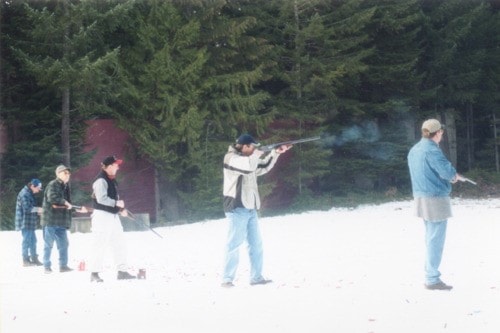The official end of the long-gun registry came on Tuesday, April 5. The Senate passed Bill C-19 by a vote of 50-27, and royal ascent was given on April 6. For many, the long-gun registry was one of the more controversial, and some might say divisive, law enforcement measures in Canadian history.
Wes Swain, a member of Wilderness Watch, teaches firearms safety courses in the Cowichan Lake area. Swain says that the biggest affect that ending the registry will have on Lake Cowichan residents and Canadian’s in general, is the money that will be saved. Since the long-gun registry law was put into place in 1995, Swain says the government has spent approximately $2 billion dollars on staff and the inputting of registered gun owner’s data. Swain is not against registering firearms, and in fact registers his own, but says, “we can do that on our own without the government spending $2 billion dollars.”
To those who have concerns about whether Bill C-19 will only allow criminals easier access to firearms, Swain says that those who are intending to commit a crime with a firearm find them on the black market, and if they steal them they grind off the registration number anyway. “I don’t think it (the end of the long-gun registry) will change things in our society. If someone crosses that line—if they snap—it doesn’t matter if the gun is registered or not.”
For Swain, who has a background in environmental sciences and wilderness law, and who was in charge of hunting education law for the province until this past Feb., hunting is a part of our collective Canadian heritage. “We are an outdoors type of people. Firearms and shotguns are tools for outdoor recreation and hunting.” He says that many Canadians hunt deer, moose, and other animals to feed their families, and that with the end of the long-gun registry, “It has gone back to the way it always was.”
However, the end of the registry does not mean that we can all simply walk into a store that sells guns to purchase a firearm. Those who wish to possess and use firearms must be 18 or older and must still take the firearms safety course and pass the subsequent exam. Both courses must be passed with a minimum of 80 per cent. Individuals must then acquire a Possession and Acquisition Licence—a federal document—from the RCMP. This includes filling out an application form and being subject to a criminal record check.
There are three different classifications of firearms, all of which require attaining a licence, and all of which require the individual to take a firearms course in order to purchase a firearm. The first is the one discussed above, called the Canadian Non-Restricted Firearms Course (CFSC), which applies to long-guns such as ordinary rifles and shot guns.
The second is called the Canadian Restricted Firearms Course (CRFSC), which applies to hand guns. This course can only be taken if the individual has completed the CFSC and is a restricted course. On top of this, owners must acquire an authorization for transport in order to take the weapon from the store to their residence. The weapon can only be used at a gun range and must be locked in an opaque case. The gun must be placed in a locked gun case or closet, be equipped with a trigger lock, and be stored with the registration and ownership documents. To transport the weapon to a gun range, the owner must acquire a separate transportation permit.
The final classification is for machine guns, hand grenades, cut off guns and other such weapons, and is called a Canadian Prohibited Firearms Safety Course. Swain says it is very hard to acquire a licence for these kinds of weapons and that the licence is meant for those weapons which are family heirlooms. These weapons cannot be used for hunting or be fired at a gun range.
As far as Swain is concerned, the key to ensuring safety when it comes to firearms, is education. He has taught the Firearm Safety Course to approximately 60 people since Jan. and expects that by the end of April, that number will sit around 90. He allows only 10 people per class and says that it is more about the individual learning how to use and properly store a firearm, than the passing of the course. He feels that Canada’s gun laws are under control. “We have a great country. May we always have to prove our right to own firearms.”
And though Judge Marc-Andre Blanchard extended a temporary injunction ordering the Conservative government to continue registering long guns in Quebec on April 20, the rest of Canada seems to be adapting to the new law with no major concerns.
